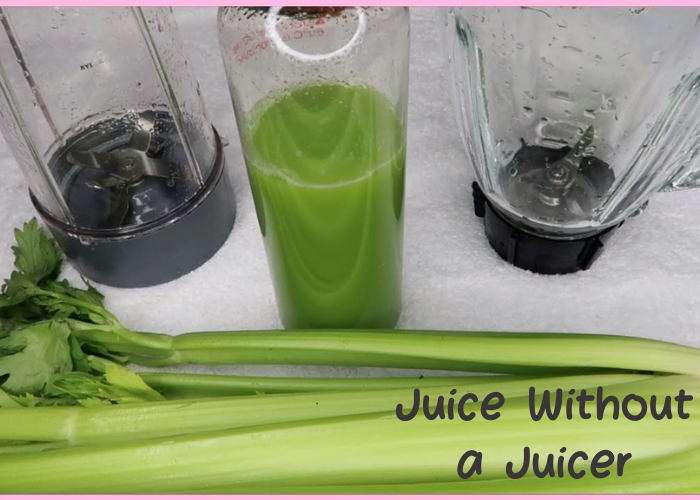Are you interested in incorporating fresh juices into your diet but don’t have a juicer? Don’t worry, you can still enjoy the benefits of juicing without a juicer. There are several reasons why you may choose to juice without a juicer. Perhaps you don’t have the space or budget for a juicer, or maybe you’re traveling and don’t have access to one. Whatever the reason, juicing without a juicer is possible and can be just as effective in extracting the nutrients from fruits and vegetables.
Tools and Equipment Needed for Juicing Without a Juicer
Before you begin juicing without a juicer, it’s important to gather the necessary tools and equipment. While you won’t need a dedicated juicer, there are a few items that will make the process easier. First, you’ll need a blender.
A high-speed blender is ideal, as it will help break down the fruits and vegetables into a smooth consistency. Additionally, you’ll need a fine-mesh strainer or nut milk bag to strain the juice and remove any pulp or solids. Finally, a large bowl or pitcher to collect the juice is essential.
Choosing the Right Fruits and Vegetables for Juicing
When juicing without a juicer, it’s important to choose the right fruits and vegetables for optimal flavor and nutrition. Generally, any fruit or vegetable that can be juiced in a juicer can also be juiced without one.
However, some fruits and vegetables may require additional preparation or modifications. Citrus fruits, such as oranges and lemons, can be juiced by hand using a citrus squeezer. Leafy greens, like kale and spinach, may need to be finely chopped or blended with a high-speed blender to extract the juice effectively.
Preparing Fruits and Vegetables for Juicing Without a Juicer
Properly preparing your fruits and vegetables is crucial when juicing without a juicer. Start by washing all produce thoroughly to remove any dirt or pesticides. For firm fruits and vegetables, such as apples or carrots, you may need to chop them into smaller pieces to fit into the blender.
Softer fruits, like berries or melons, can be added directly to the blender without chopping. If using leafy greens, remove any tough stems and tear them into smaller pieces. By preparing your produce correctly, you’ll ensure a smoother juicing process and better results.
Methods for Juicing Without a Juicer – Blending, Using a Food Processor, Using a Hand Juicer
There are several methods you can use to juice without a juicer. The most common method is blending. Simply add your prepared fruits and vegetables to a high-speed blender and blend until smooth. Once blended, strain the mixture through a fine-mesh strainer or nut milk bag to remove any pulp or solids.
Another option is to use a food processor. Similar to blending, you’ll add your fruits and vegetables to the processor and process until smooth. Lastly, if you have a hand juicer, you can use it to extract juice from citrus fruits or small quantities of other fruits.
Tips for Getting the Best Results When Juicing Without a Juicer
To get the best results when juicing without a juicer follow these tips:
- Use ripe and high-quality produce for the best flavor and nutrition.
- Start with small quantities and gradually increase the amount of fruits and vegetables as you become comfortable with the process.
- Experiment with different combinations of fruits and vegetables to find your preferred flavors.
- Blend fruits and vegetables in stages to ensure a smooth consistency.
- Stir the juice well before consuming it to ensure an even distribution of nutrients.
By following these tips, you’ll be able to maximize the benefits of juicing without a juicer.
Recipes for juicing without a juicer
If you’re looking for some delicious and nutritious juice recipes to try without a juicer, here are a few ideas to get you started:
- Green Detox Juice:
- 2 cups spinach
- 1 cucumber
- 1 green apple
- 1 lemon
- 1-inch piece of ginger
- Tropical Bliss Juice:
- 1 cup pineapple chunks
- 1 mango
- 1 orange
- 1 lime
- Beetroot Boost Juice:
- 2 beetroots
- 2 carrots
- 1 apple
- 1-inch piece of ginger
Feel free to modify these recipes to suit your taste preferences and the ingredients you have on hand.
Benefits of Juicing Without a Juicer
Juicing without a juicer offers several benefits. First and foremost, it allows you to incorporate fresh juices into your diet without the need for a specialized appliance. This can be particularly beneficial if you have limited space in your kitchen or are on a tight budget.
Additionally, juicing without a juicer allows you to customize your juice blends to suit your taste preferences and dietary needs. You have full control over the ingredients and can experiment with different combinations to find what works best for you.
Potential Drawbacks of Juicing Without a Juicer
While juicing without a juicer can be a convenient and cost-effective option, there are a few potential drawbacks to consider. Without a juicer, the process of extracting juice can be more time-consuming and labor-intensive.
You may need to spend extra time chopping, blending, and straining the fruits and vegetables. Additionally, juicing without a juicer may result in a slightly different texture and consistency compared to juice extracted with a juicer. The absence of a juicer’s fine filter may lead to some pulp or solids in the juice.
Conclusion
In conclusion, juicing without a juicer is a viable option for those who want to enjoy the benefits of fresh juices without the need for a specialized appliance. By using a blender or food processor and following the tips and methods outlined in this article, you can create delicious and nutritious juices at home. Experiment with different fruits and vegetables, try out new recipes and reap the rewards of juicing without a juicer.
